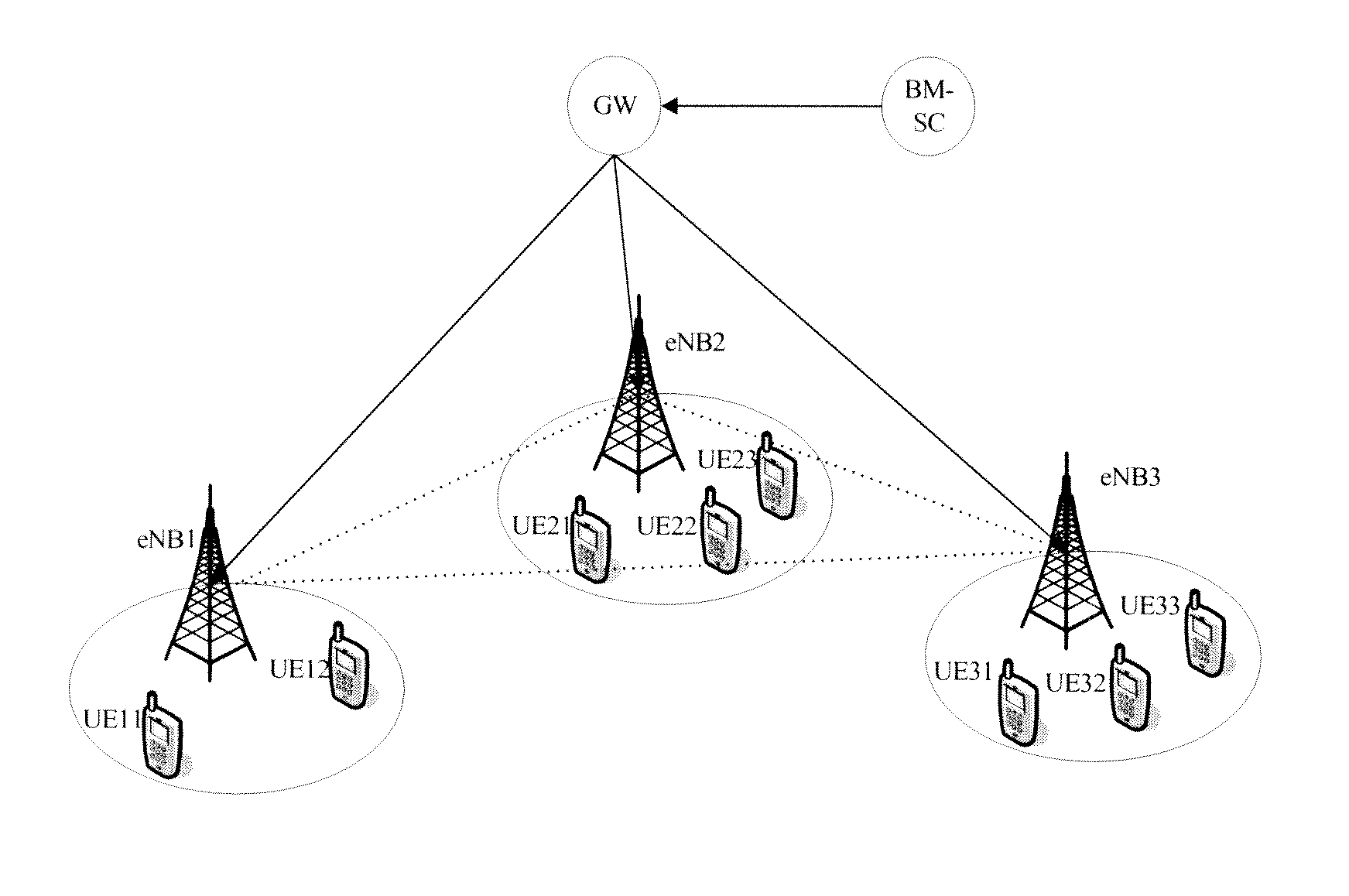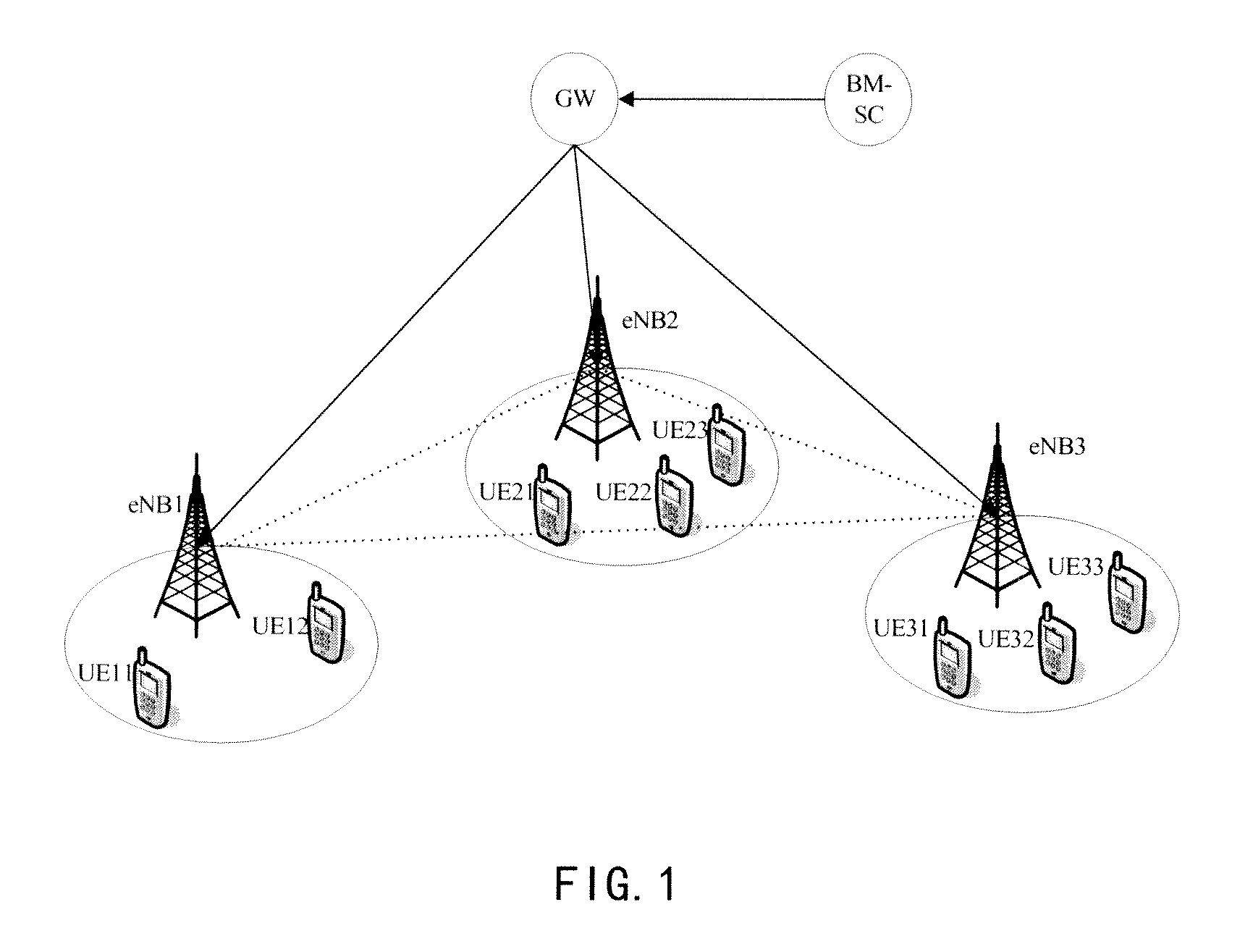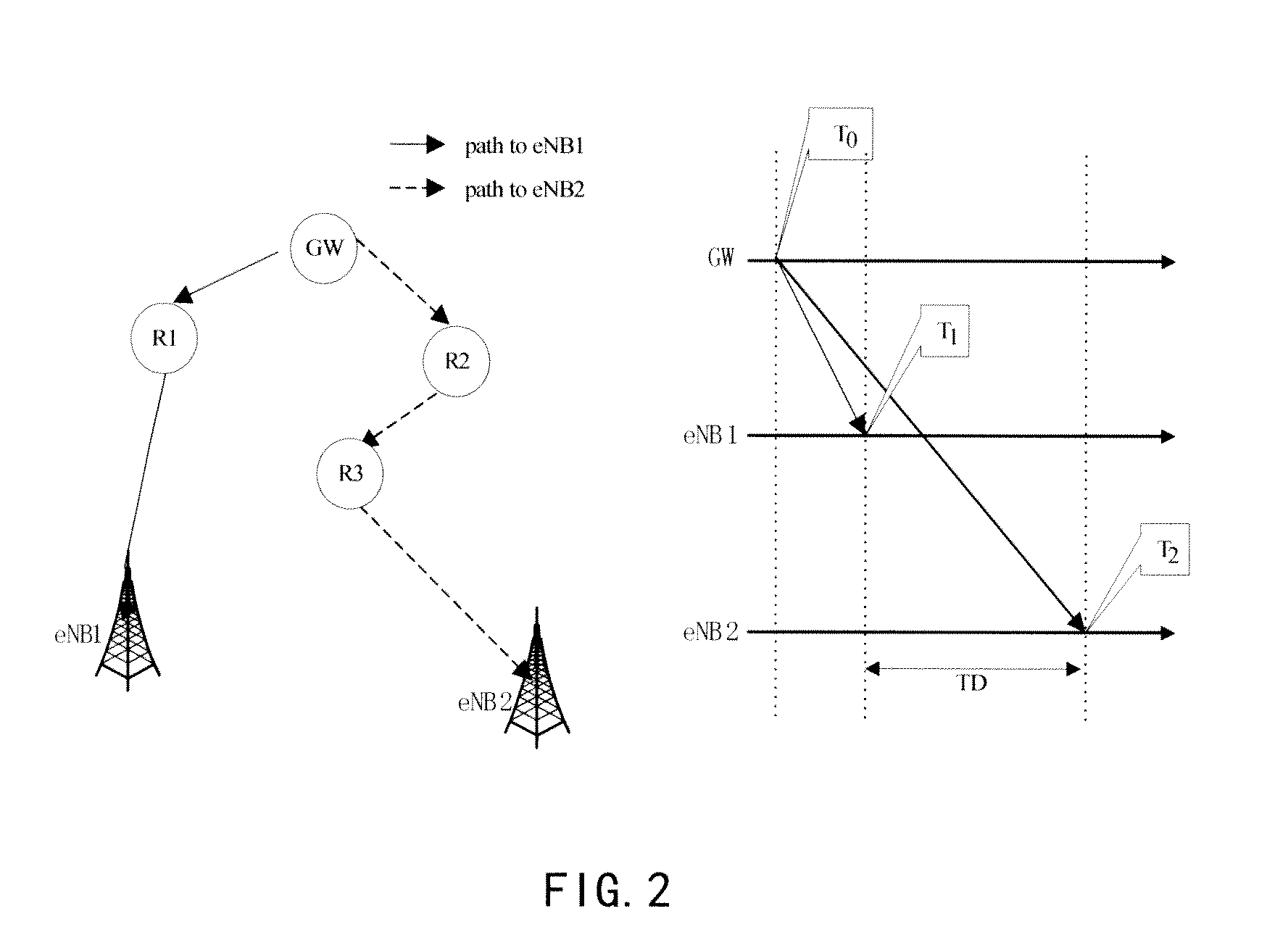Method for synchronizing between a gateway and base stations and corresponding gateway and base station
a technology of synchronizing and base stations, applied in the field of mobile communication synchronization technology, can solve the problems of inconsistent timing of framing processes, data packets that cannot be correctly combined or even introduced additional interference, and different delays, so as to achieve the effect of convenient determination
- Summary
- Abstract
- Description
- Claims
- Application Information
AI Technical Summary
Benefits of technology
Problems solved by technology
Method used
Image
Examples
Embodiment Construction
[0050]The illustrative embodiments of the present invention will be further described in detail in the following with reference to accompanying drawings.
[0051]Reference is now made to FIG. 3, which is a flowchart showing the method for synchronizing between a gateway and a plurality of base stations according to the first embodiment of the present invention. As shown in FIG. 3, this embodiment comprises the following steps.
[0052]At the gateway, the following process is performed. Specifically, in step S1, a synchronization period corresponding to a packet to be transmitted to the plurality of base stations is determined and said synchronization period is used as a scheduling granularity of the base stations. Next, in step S2, information indicating the synchronization period is added to the header of the packet. Then, in step S3, the packet is transmitted to the plurality of corresponding base stations.
[0053]At each of the plurality of base stations, the following process is perform...
PUM
 Login to View More
Login to View More Abstract
Description
Claims
Application Information
 Login to View More
Login to View More - R&D
- Intellectual Property
- Life Sciences
- Materials
- Tech Scout
- Unparalleled Data Quality
- Higher Quality Content
- 60% Fewer Hallucinations
Browse by: Latest US Patents, China's latest patents, Technical Efficacy Thesaurus, Application Domain, Technology Topic, Popular Technical Reports.
© 2025 PatSnap. All rights reserved.Legal|Privacy policy|Modern Slavery Act Transparency Statement|Sitemap|About US| Contact US: help@patsnap.com



